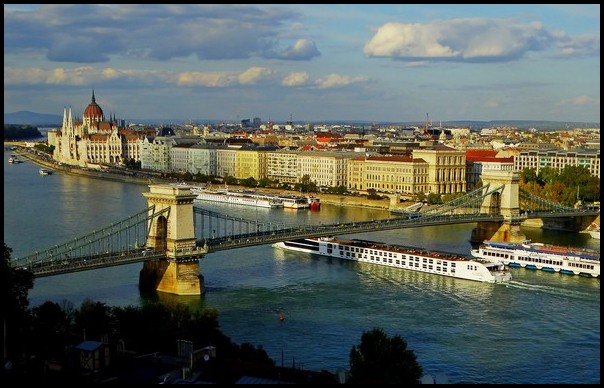 Differences between US and European Cities
Differences between US and European Cities
In 2019 I visited a whopping 13 countries, a first-time achievement for me since I travel so slowly and thoroughly (Generally, I explore only about four countries per year). All of my 2019 destinations were new countries for me, bar two, namely USA and Spain.
Except for Morocco, all were European countries and most were in Eastern Europe and the Balkans. More specifically, I visited:
Portugal, Canary Islands (part of Spain), mainland Spain, Montenegro, Albania, Macedonia, Kosovo, Bulgaria, Poland, Slovakia, Hungary, Romania and Cyprus.
As I explored various cities and towns in these European countries, I soon began noticing some similarities, some features that are an integral part of most, if not all, of these cities, but which are generally not found in American cities.
Perhaps the features stood out so pointedly to me because I didn’t grow up with these things in American cities. They’re all features that I found utterly charming and which made me greatly enjoy the European towns and cities.
I can’t claim to be a thorough expert on European cities since I’ve only visited a handful of them, and those mostly in Eastern Europe & the Balkans. But I can confidently point out several wonderful common features of the cities I have visited, both last year and in previous European travels.
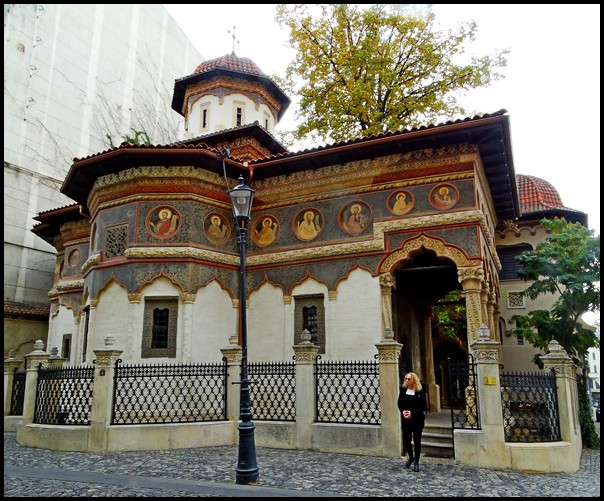 1. Gorgeous Historic Architecture
1. Gorgeous Historic Architecture
The most obvious difference between most European cities and American ones, of course, is the plethora of stunning historic architecture found in European towns and cities. After all, many of the cities were established 1000-2000 years ago and have been ruled by several different empires & cultures over the centuries. On the other hand, the USA was only established in 1776, a mere 224 years ago.
I confess that last year I didn’t know much about the long complex histories of these cities before arriving in any given country or city. I simply didn’t have enough time to do my usual extensive pre-research.
But I certainly learned a lot soon after arriving in each destination. I promptly began visiting museums, churches, mosques, synagogues, famous historic buildings, ancient city walls, castles, forts and other historic & archaeological sites. I also joined free walking tours in many cities, guided by well-educated guides who explained the cities’ histories in depth.
From all those sources I learned that most countries in Eastern Europe and the Balkans had been ruled by many different empires, including the Lycian, Greek, Roman, Byzantine, Huns, Ottoman Turks, Hitler Germans, Austro-Hungary and Communist Russia. Not every country or city was ruled by each and every one of these different civilizations, but each country was ruled and inhabited by several of them over the centuries.
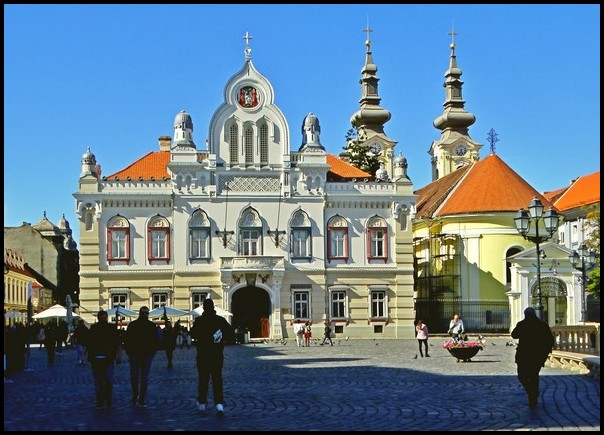 Each empire left its mark in many forms, including religion, cuisine, clothing, daily habits & lifestyle and architecture. As a result, most cities in this region have an amazing mix of historic architecture from many different cultures, epochs and European architectural trends of various centuries.
Each empire left its mark in many forms, including religion, cuisine, clothing, daily habits & lifestyle and architecture. As a result, most cities in this region have an amazing mix of historic architecture from many different cultures, epochs and European architectural trends of various centuries.
Since I’m a huge fan of architecture, exploring European cities and towns was an exciting, wonderful adventure for me. Last year, I saw architecture from the Greeks, Romans, Ottoman Turks, Communists and European architectural trends of Gothic, Neo Gothic, Romanian, French Neoclassic, Renaissance, Victorian, Baroque, Queen Anne, Art Nouveau, Art Deco, and some styles I’d never even heard of before.
Of course some American cities do have a smattering of great historical architecture, too. But it all dates back only to the 1800s and 1900s, whereas architecture in European cities often goes back to centuries BC and then through all the ages up to the 1900s.
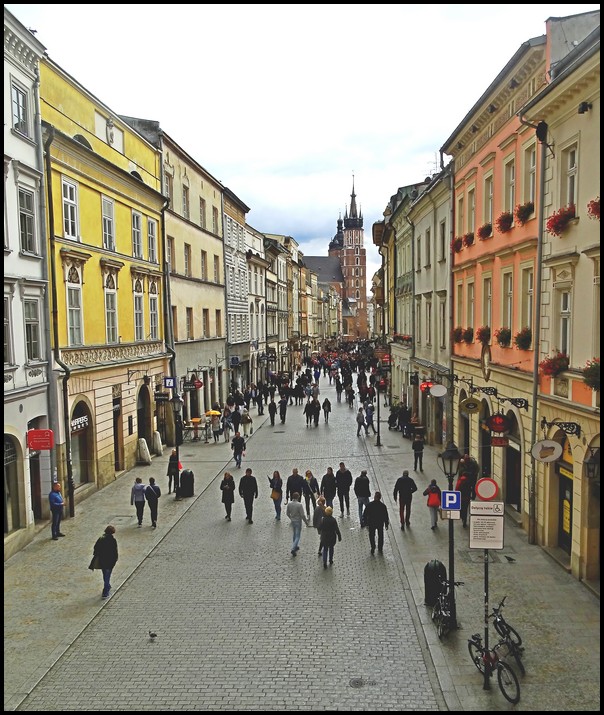
pedestrian-only road in historic Krakow – Poland
2. Pedestrian-Only Streets
European cities and towns are generally a lot more pedestrian friendly than US cities I discovered. At least in the town centers.
Every city & town has at least one major pedestrian-only shopping street. But many cities have several connected pedestrian roads, making a grid or an entire district without any vehicles.
This is really fantastic for several reasons. First of all, as a pedestrian, you don’t have to worry about looking out for traffic or getting run over by a car, bus, truck, taxi or motorbike.
Secondly, the pedestrian zone is so much quieter than normal city streets! No traffic noise! No racing engines, no horns honking, no mufflers backfiring or brakes screeching. Just people walking around.
The absence of vehicles and their blatant noise makes walking through European cities’ pedestrianized walkways, streets and plazas infinitely more relaxing, calm and enjoyable.
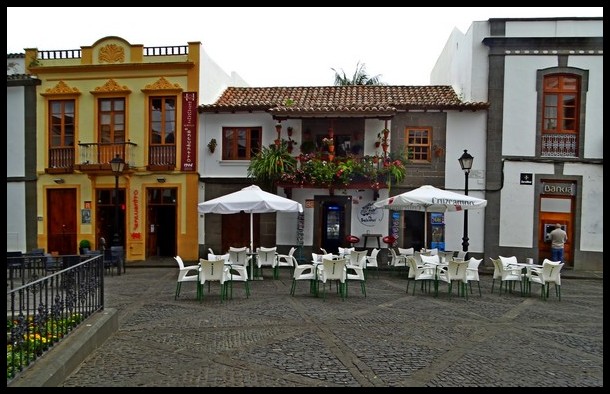
outdoor restaurant seating on a town plaza in Canary Islands – Spain
3. Outdoor eating & drinking establishments
Compared to American cities, the European counterparts have a lot more restaurants, cafes and even bars with outdoor seating. Many of these establishments are found in the pedestrian-only districts, which means there are no cars or buses zooming past.
Outdoor restaurants, cafes and bars are also found in open plazas and leafy parks. Most parks also have small kiosks or cafes on their grounds.
4. Hot Coffee Vending Machines
In the US, vending machines are mostly a thing of the past. You might find some inside stores, but rarely, if ever, out on the streets. Quite unfortunately, the machines would quickly be vandalized and robbed, if not completely destroyed or stolen.
But on the streets of European cities, vending machines selling hot drinks in winter and cold drinks in summer are quite common. They’re also found at bus and train station, in parks and plazas.
The machines usually offer a choice of tea, hot chocolate and various coffee selections served in small paper cups. Even better, vending machine drinks are super cheap, costing just 1 Euro or even 60 cents.
These coffee vending machines are really convenient for pedestrians wandering the city, residents on the way to/from work and passengers catching a bus, train or subway.

Sri Lankan food is very similar to Indian food
5. Cafeteria-style Restaurants
My favorite type of restaurants are what we might call ‘cafeteria style’ in the US. They have a selection of hot and/or cold prepared meals on display in large glass cases. Customers simply point out what they want, a staff member scoops the selections onto a plate and hands it to the customer, who then goes to pay then sits down to eat. Fast. Easy. Efficient.
These sorts of restaurants are all over SE Asian, pretty much in every country. Since I spent nearly 15 years traveling, living and working around SE Asia, I certainly became accustomed to these fast, easy, convenient restaurants.
So I was delighted to find them in many European countries, particularly Poland, Slovakia, Bulgaria and Romania. I’ve also since discovered them in Turkey.
On the other hand, I didn’t really come across any in most Bulkan countries, including Montenegro, Albania, Kosovo or Macedonia. Nor did I find them in Cyprus, Spain, Canary Islands or Portugal.
This style of eating doesn’t seem popular in western Europe, but it’s quite common in Eastern European countries.
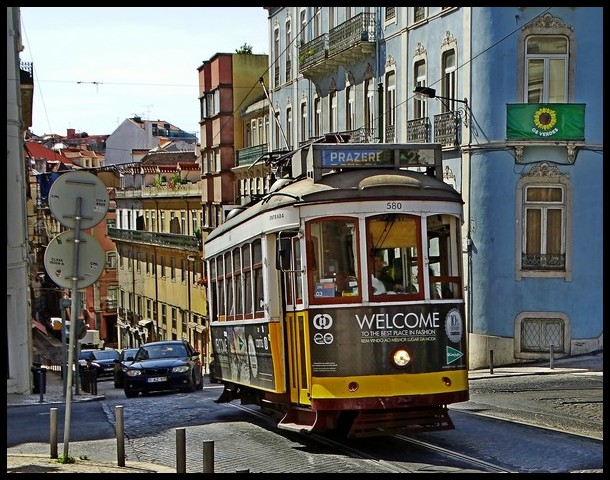
vintage tram in Lisbon – Portugal
6. Trams & Trolleys
Lisbon, Portugal was one of the first European cities I visited in 2019. Lisbon is famous for its steep hills, bright yellow vintage trams, colorful Victorian buildings and other charming features.
I was utterly charmed by Lisbon from the first day and I adored their super cute, narrow yellow trams with their beautiful original wood interiors. All over the city I encountered the cute vintage trams clamoring & screeching & jolting up and down Lisbon’s steep winding cobblestone roads.
After Portugal, as I continued traveling eastward, I started noticing trams in other cities, and even in small towns. I saw trams in Sophia, Buglaria; in Krakow, Poland; in Timisoara, Brasov and Bucharest, Romania; in Budapest, Hungary; in Bratislava, Slovakia and many other towns & cities.
Eventually I realized that trams are not at all unique to Lisbon. On the contrary, they seem to be part of most European cities and towns, at least those in eastern Europe and the Balkans.
Along with trams, many cities and towns also have trolleys. The difference, I learned, is that trams run on tracks and have electric cables above, guiding them along, while trolleys have the overhead electric lines powering them. but have wheels and run on roads. They’re kind of like electric buses or a cross between a bus and a tram.
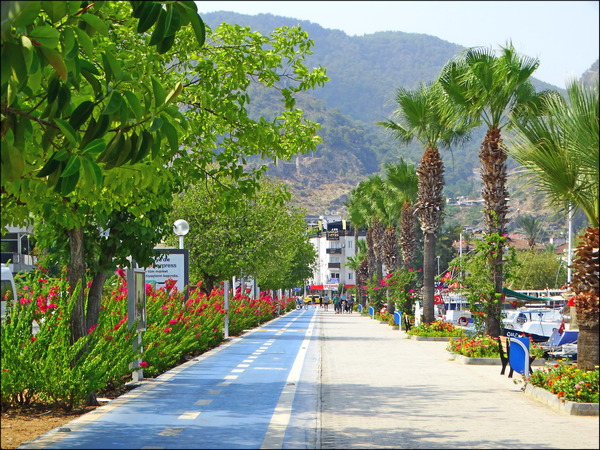 7. Cycling Lanes
7. Cycling Lanes
Most European towns and cities have miles and miles of prominent, inter-connected cycling lanes. The lanes are usually bright blue, wide enough for bike traffic in two directions, and clearly marked at road crossings.
These convenient bike routes pass along city roads and through leafy parks. They allow cyclists to pedal between nearly all destinations in the city.
8. Electric Bikes & Scooters
Another big difference between US and European cities & towns is that in Europe the use of electric-powered vehicles is quite common. All over every town and city there are people getting around on electric bicycles, motorbikes and scooters.
These vehicles are obviously much more ecological, as well as much quieter.
Quite unfortunately, the USA is way behind on this technology! (no doubt due to intentional suppression by the US car and oil industries. Grrr)
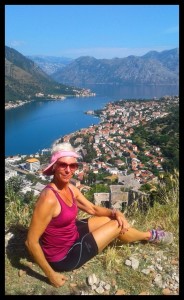 Summary
Summary
In 2019 I discovered many differences between American and European cities. All of the differences I found very charming and greatly enhanced the cities and towns I visited.
It would be great if more American cities incorporated these user-friendly features.
=====================================
You might also enjoy:
13 Things I Love about Eastern Europe
16 Highlights of my 2019 Travels in Eastern Europe
======================================












 Hi! I'm Lash, an American nomadic world traveler who's been traveling solo since 1998. I’m passionate about traveling the world nomadically and then sharing it all with you. I hope to inspire you to travel the world, to entertain you with tales from the road, and to help you reach your travel dreams. Welcome!
Hi! I'm Lash, an American nomadic world traveler who's been traveling solo since 1998. I’m passionate about traveling the world nomadically and then sharing it all with you. I hope to inspire you to travel the world, to entertain you with tales from the road, and to help you reach your travel dreams. Welcome! 




4 pings
5 Amazing Places to Stay in Europe - LashWorldTour
2020/08/26 at 7:21 pm (UTC 8) Link to this comment
[…] if you have made up your mind to fly or travel to Europe, you must also have your useful guide for the most amazing places to stay. Fend off the idea of […]
Introduction to Croatia - LashWorldTour
2020/09/11 at 8:54 pm (UTC 8) Link to this comment
[…] Differences Between American and European Cities […]
6 Crazy Facts about Switzerland - LashWorldTour
2025/04/18 at 11:18 pm (UTC 8) Link to this comment
[…] my 90 days in this pretty country.==============================Meanwhile, you might also like:Differences between US and European Cities15 Surprising Facts about Wales11 Things Ireland is Famous […]